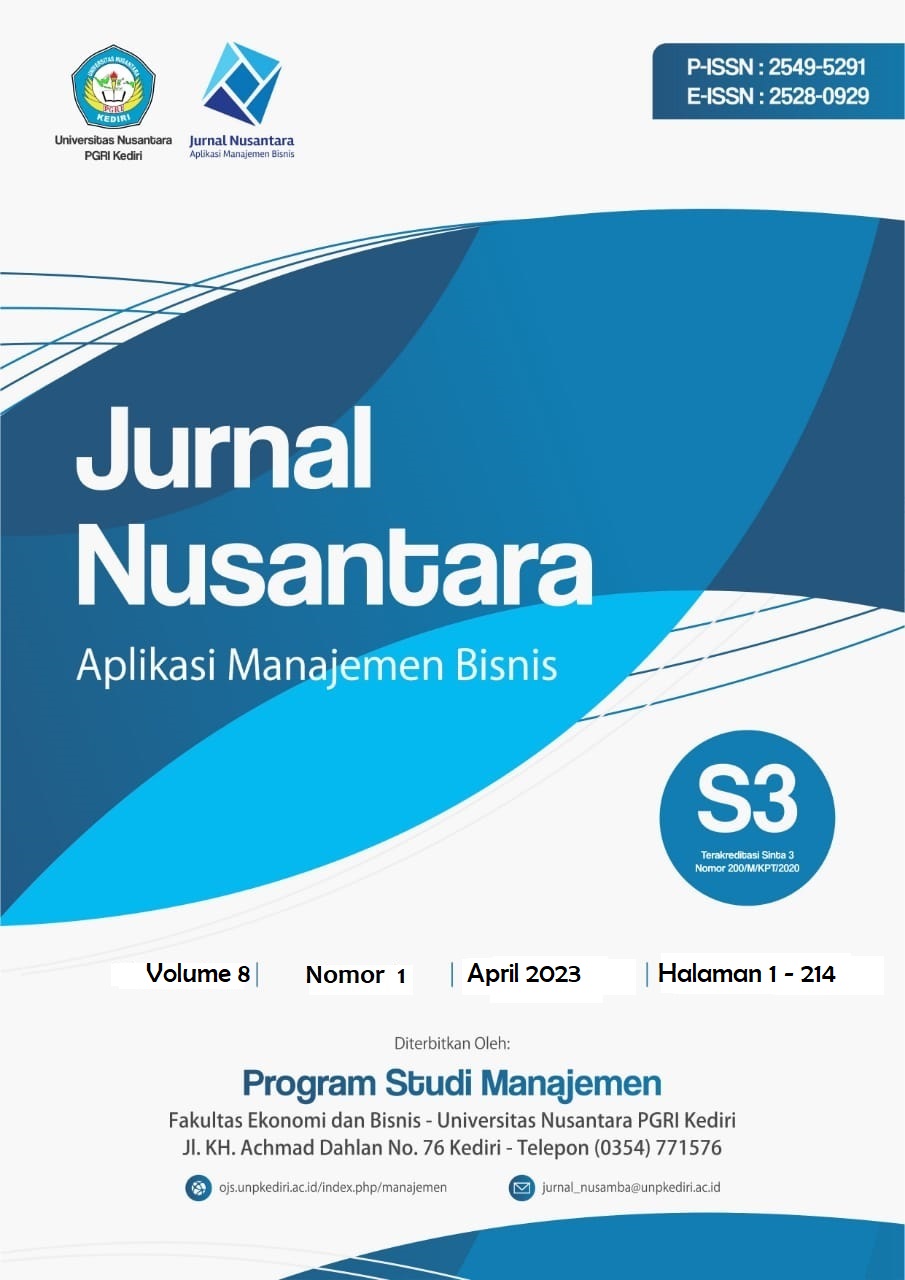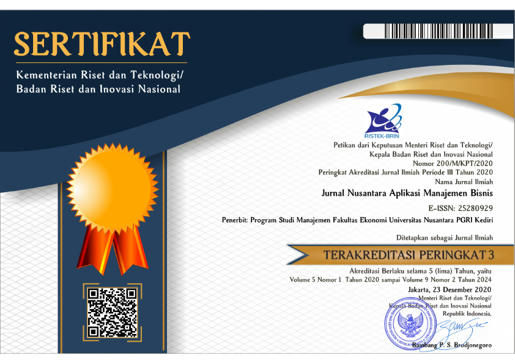Prototype Aplikasi Rekomendasi Rekruitmen Karyawan Start-Up Pemula Menggunakan Metode Multi Attribute Utility Theory
DOI:
https://doi.org/10.29407/nusamba.v8i1.18042Keywords:
Recruitment, Multi Attribute Utility Theory, Prototype, AgileAbstract
Research aim : The purpose of this study is to present a solution in the form of a web-based system with the Multi Attribute Utility Theory (MAUT) method approach to provide convenience in the employee selection process at CV. Bee Digital Prestasi Nusantara.
Design/Methode/Approach : The Multi Attribute Utility Theory method approach provides a solution in the form of recommendations for the final results of the selection process which is carried out by conducting an assessment through several alternatives and sub-alternatives multiplied by the weight that has been determined by the company. The method approach was divided into several stages: (1) Submissions and Tests (2) Calculation of Values, Criteria and Weights (3) Ranking.
Research Finding: The application of the MAUT method can provide effective decisions on the recruitment of prospective employees accepted by the company. The experimental results from the research showed that using MAUT method is able to speed up the recruitment process and can quickly determine prospective employees who match the company's criteria compared to conventional methods.
Theoretical contribution/Originality : This research result showed that theoretically, MAUT method supports the employee selection process
Practitionel/Policy implication : The practical implication is that the attributes used in the selection process support the company in getting employees that match their needs
Research limitation : This method has limitations, namely the range of values is still static. So, it needs improvement in the next research.
Keyword: Recruitment, Multi Attribute Utility Theory, Prototype, Agile
Downloads
References
V. Mohsen dan Behrouz Nouri, “A Fuzzy AHP Approach for Employee Recruitment,” J. Decis. Sci. Lett., vol. 3 (1), pp. 27–36, 2013.
M. Freyd, “Measurement in personnel selection: An outline of research procedure,” in Measurement in personnel selection: An outline of research procedure, 1923, pp. 215–249.
P. Blunt, Human resource management. Melbourne: Longman Cheshire, 1986.
C. Brotherton, Paradigm of selection validation: Some comment in the light of British equal opportunities legislation. 1980.
& M. P. J. Robertson I. T., Management selection in Britain: A survey and critique. 1986.
WartaEkonomi, “JobSmart Tawarkan Kemudahan Bagi Perusahaan untuk Seleksi Calon Karyawan Secara Online,” 2017. .
NN, “Landasan Teori Multi Attribut Utility Theory,” E-Journal, 2011.
Schaefer, “Multi Attribute Utility Theory,” 2012.
R. S. Pressman, Software Engineering : a practicioner’s approach Hill. New York: McGraw, 2010.
I. Sommerville, Software Engineering (Rekayasa Perangkat Lunak). Jakarta: Erlangga, 2011.
Downloads
Published
Issue
Section
License
Authors who publish with this journal agree to the following terms:
- Copyright on any article is retained by the author(s).
- The author grants the journal, the right of first publication with the work simultaneously licensed under a Creative Commons Attribution License that allows others to share the work with an acknowledgment of the work’s authorship and initial publication in this journal.
- Authors are able to enter into separate, additional contractual arrangements for the non-exclusive distribution of the journal’s published version of the work (e.g., post it to an institutional repository or publish it in a book), with an acknowledgment of its initial publication in this journal.
- Authors are permitted and encouraged to post their work online (e.g., in institutional repositories or on their website) prior to and during the submission process, as it can lead to productive exchanges, as well as earlier and greater citation of published work.
- The article and any associated published material is distributed under the Creative Commons Attribution-ShareAlike 4.0 International License












